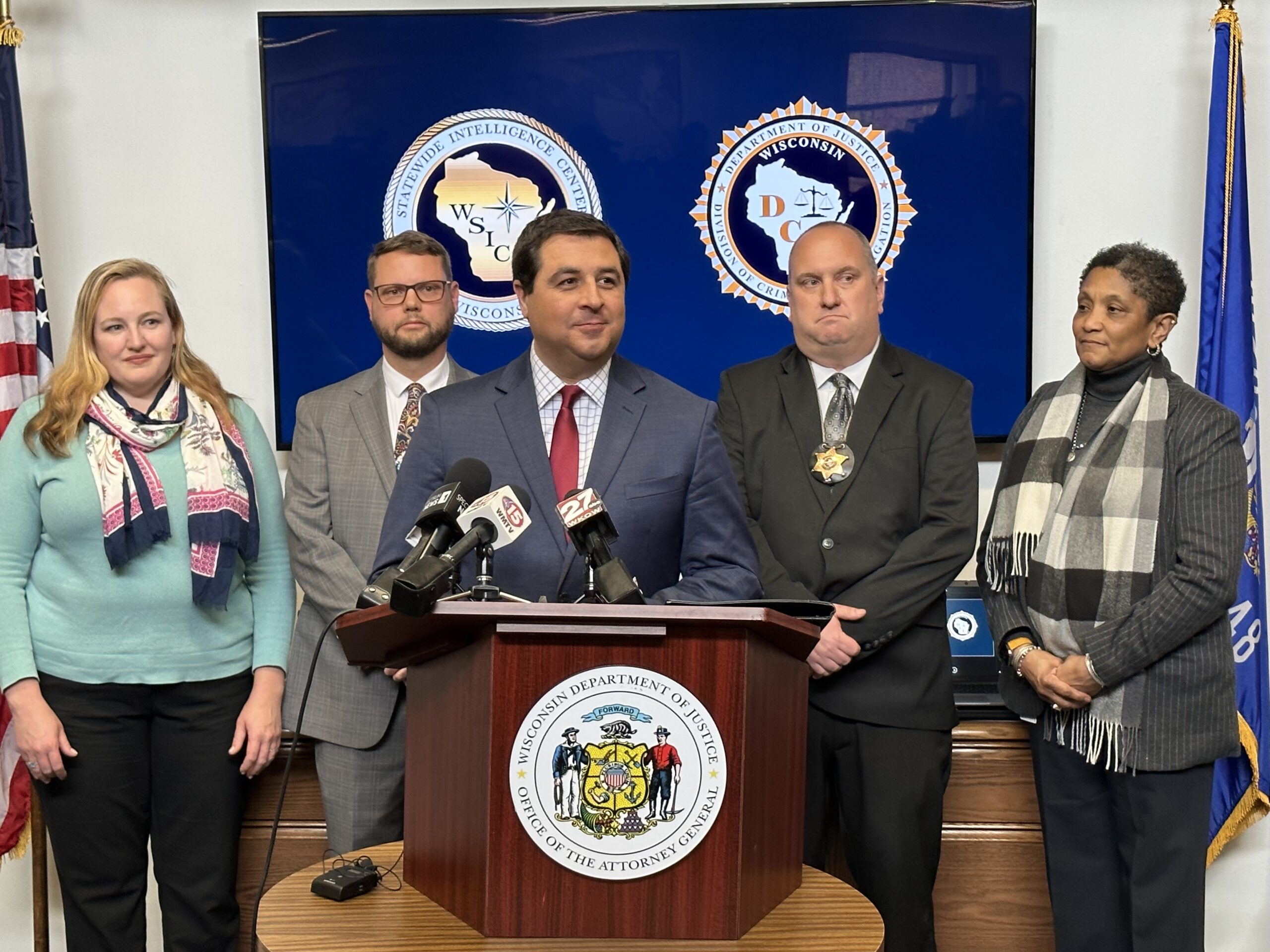Wisconsin Attorney General visits law enforcement agencies awarded grants from State Opioid Settlement Funds
By: WISCONSIN LAW JOURNAL STAFF//June 19, 2024//
Wisconsin Attorney General visits law enforcement agencies awarded grants from State Opioid Settlement Funds
By: WISCONSIN LAW JOURNAL STAFF//June 19, 2024//
On Tuesday, Wisconsin Attorney General Josh Kaul kicked off a series of visits to law enforcement agencies around the state that received grants from state opioid settlement funds that the Wisconsin Department of Justice (DOJ) helped secure.
According to WisDOJ, Twelve Tribal nations, county, and municipal law enforcement agencies received grants for projects to prevent and reduce the dangers of opioid use. This grant program is part of the Wisconsin Department of Health Services’ (DHS) plan to use the state’s share of the National Prescription Opiate Litigation settlement with opioid distributors and manufacturers.
“As these investments illustrate, the funds we’ve helped secure are making it possible to do more to combat the opioid epidemic,” said Kaul. “Thank you to the law enforcement agencies that are using these funds to expand their efforts to fight this crisis.”
“The opioid settlement funds provide us an opportunity to improve the health and safety of our communities,” said Kirsten Johnson, Department of Health Services Secretary-designee.
“We’re pleased to partner with these law enforcement agencies on critical projects that will save lives,” Johnson added.
According to authorities, the projects funded by this grant program align with the goals of the national opioid settlement funds agreement. The goals require the funding to be used for prevention, intervention, treatment, and recovery support services. Wisconsin is due to receive more than $750 million through 2038 thanks to negotiations made in part by DOJ. 30 percent of those funds will be allocated to DHS to be spent on opioid abatement initiatives, subject to approval of the legislature’s Joint Committee on Finance. The remainder of the funds are for local needs as identified by the county and municipal governments that participated in the litigation.
The projects law enforcement agencies received grants for include community drug disposal systems; programs that keep people with an opioid use disorder out of jail; education and training for staff on the medications for opioid use disorder, including how the medications are used as part of a treatment program; and treatment for jail residents with an opioid use disorder, officials noted.
Community drug disposal systems
Funding under this project must be used to distribute drug deactivation units and/or purchase and install drug drop boxes. These efforts keep drugs from being taken by mistake, falling into the wrong hands, and contaminating the water supply by being flushed in a toilet, poured down a drain, or thrown in the trash.
Programs that keep people with an opioid use disorder out of jail
Funding under this project must be used to connect people who are using opioids and engaging in illegal behavior to health and social services in their community. This effort is intended to keep people in the community with their supports rather than the criminal justice system in which the supports they need may not be available.
Education and training for staff on the medications for opioid use disorder, including how the medications are used as part of a treatment program
Funding under this project must be used to build staff awareness of methadone, buprenorphine products, and naltrexone. These medications reduce cravings for opioids and help with withdrawal symptoms. The medications combined with counseling and other supports are considered the most effective treatment approach for opioid use disorder. This effort is intended to resolve misunderstandings and promote the use of this treatment approach in jails.
Treatment for jail residents with an opioid use disorder
Funding under this project must be used to make the medications for opioid use disorder—methadone, buprenorphine products, and naltrexone—available to jail residents with an opioid use disorder, as well as counseling and other supports to promote recovery. This effort is intended to reduce the risk of death during incarceration and upon release.
DOJ and DHS announced the full list of law enforcement grant recipients last month. Attorney General Kaul kicked off his tour today at the Rock County Sheriff’s Office. He will visit other agencies around the state throughout the month.
Legal News
- Outside the RNC, small Milwaukee businesses and their regulars tried to salvage a sluggish week
- Biden called to resign immediately after the president announces he won’t seek reelection
- Biden drops out of 2024 presidential race, endorses Harris
- Local PA cops allegedly thought Trump’s would-be assassin was Secret Service
- Biden-Lead Secret Service admits agency denied past requests by Trump’s campaign for tighter security
- Class action filed against Walgreens
- Former Waukesha County Sheriff’s Office lieutenant pleads guilty to smuggling contraband
- Two dead, one injured after Ozaukee County water rescue
- RNC Final Day: Trump accepts GOP Nomination
- Wisconsin officials intervene in Planned Parenthood action
- 7th Circuit adopts modifications to Rules 31, 34, 40, 47 and 60
- MPD issues statement on outside agency officer assignments
Case Digests
- Ineffective Assistance of Counsel; Double Jeopardy; Sentencing
- Ineffective Assistance of Counsel; Sexual Assault-Prosecutorial Misconduct
- Contract-Negligence
- Criminal Law; Juvenile Law; Discovery
- Family Law; Child Support; Property Division First paragraph(s)
- Ineffective Assistance of Counsel- Exclusion of Evidence of Witness Bias
- Postconviction Relief-Sentencing-Ineffective Assistance of Counsel
- 14th Amendment – Due Process
- Criminal-Sentencing Guidelines – Enhancement
- Bankruptcy-Tax
- Civil Rights – 14th Amendment-Jury Instructions
- Contract; Foreclosure and Property












